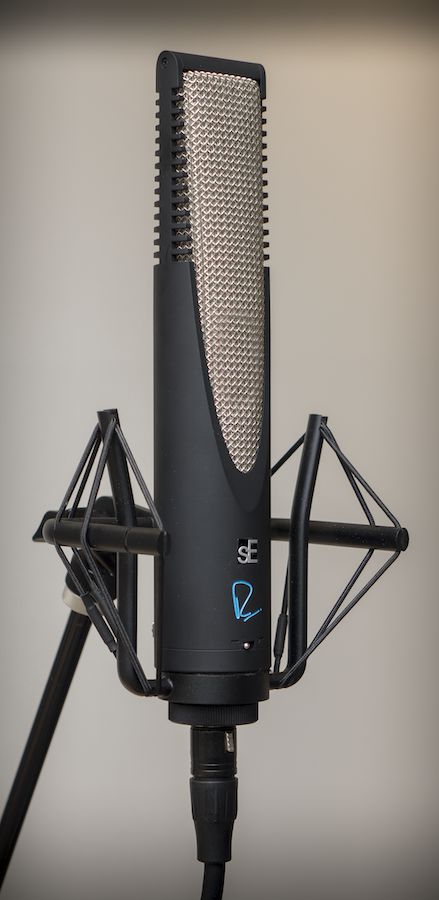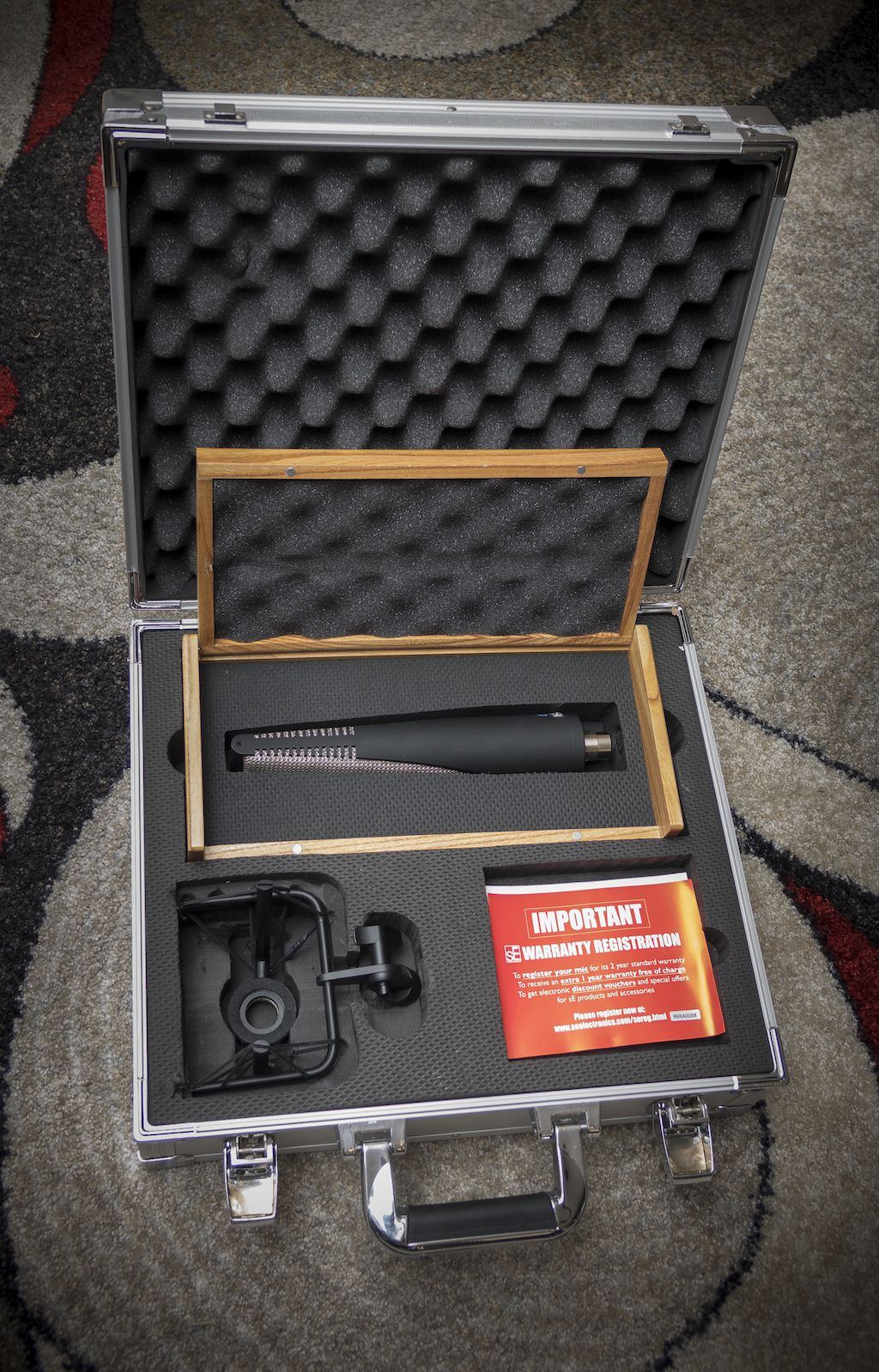Home, Home on the Range
Ribbon microphones—for all their gifts—have always had one shortcoming: frequency range. Granted, whether or not it's a shortcoming really depends on the listener, for producing a truly natural sonic response is what ribbon mics have always done best. For many recordings, you just don't need to reach all the way to 20 kHz. For example, the sE Voodoo VR1 and Audio-Technica AT4080 both have 20 Hz–18 kHz high frequency response and are both exceptional sounding mics. But while both sound wonderfully natural, that diminished high end—especially for people who have traditionally recorded with condenser microphones—can be a little startling.
Enter Rupert Neve: A legend in the audio industry whose name is synonymous with high-quality sound. Mr. Neve partnered with sE to create a ribbon microphone that could reach all the way to 20 kHz and beyond. By combining Neve's custom electronics with an sE 2.5-micron ribbon, the partnership of these two companies has produced the RNR1: the first ribbon mic with 20 Hz–25 kHz frequency range. But high fidelity alone does not a great sounding transducer make, so let's explore this unique microphone more thoroughly.
First Glance
The RNR1 ships in two cases: a flight case and a hardwood microphone case (the latter fits in the former), and comes with an exotic-looking shock mount. The mic screws into the mount, so there's no mounting angle the RNR1 can't oblige. The microphone itself is an exquisite design with crisp edges and bold cosmetics emboldened with the signatures of the men who designed it. (Siwei Zou of sE Electronics and Rupert Neve.) It kind of resembles an oversized clarinet mouthpiece, each side shielded by a tight metal mesh that protects the figure-of-8 element.

The sE RNR1 with included shock mount.
Staying Active
How It Sounds
Notice the increase in frequency response between 5 kHz and 20 kHz. Because the RNR1 is capable of capturing those upper frequencies, you'll undoubtedly be pleasantly surprised at how shiny your sources will sound. But if you're looking for a more traditional ribbon sound, the smooth curve of the response can be easily tamed with a parametric 5 dB cut at 13 kHz. However, I really enjoyed the marriage of ribbon warmth and condenser-like definition. There's also a low cut switch that starts working at about 400 Hz and rolls off to -20 dB at 20 Hz.
I recorded several sources through the RNR1 including male and female vocals, an electric guitar amp speaker cabinet, and an acoustic guitar. I also recorded those tracks with an Audio-Technica AT4080 ribbon mic and an AT4050 condenser mic for comparison. The RNR1 positively does have the low end warmth you'd expect from a ribbon, but the AT4080 did sound a bit richer. That's partially due to the typical yet pleasing ribbon response of the 4080, but was also because the 4080 is exceptionally rich in the low frequencies below 100 Hz. When compared to the AT4050, which is an excellent condenser microphone in its own right, the low end of the RNR1 was certainly more neutral and natural.
But as you'd expect, the high-mid and high frequency response is where the RNR1 really shines. The AT4080 simply doesn't have the clarity of the RNR1, and the AT4050 just didn't sound as natural. Don't get me wrong; I'm never selling any of my 4080s or 4050s, for they are still two of my favorite microphones. But the RNR1 is one of those rare microphones that simply sound magical, regardless of the source.
Is It Right For You?
All that magic does come at a price. The RNR1 costs twice as much as the AT4080, and almost three times more than the AT4050 or sE Voodoo VR1. And if you're like me, you always buy microphones in pairs. Since a pair of RNR1s would cost nearly $4,000.00, it might be the only mic you own without a matched twin for stereo or multi-channel recordings.
Conclusions
I rarely get excited about new microphones. That's mostly because I own 66 mics in 27 varieties, but also because there hasn't been a lot of exciting microphone innovation of late. So when a microphone like the RNR1 comes along, my heart skips a beat, for it truly represents technological ingenuity with classic high performance electronic design. For those reasons, while the RNR1 may cost a lot to purchase, it also represents tremendous value that will pay for itself over time. If you need a microphone that sounds fantastic on practically any source, the sE Electronics RNR1 will surely fit the bill. You just have to be one of those people whose philosophy and/or professional requirements demand that value trumps a low-cost compromise.
Pros: Immaculate sound quality and character. Ribbon neutrality with high-end clarity. Striking design aesthetic. Shock mount and mic cases included. Cons: Significant initial investment. Please don't squeeze the screens. You'll surely want more than one RNR1. Street Price: $1,999.00 NOTE: Vintage King is running a special bundle this month w/ the new SPACE filter + the sE / Rupert Neve RNR1 ribbon: http://vintageking.com/se-electronics-rnr1-and-space-reflexion-filter |





 © 2024 Ask.Audio
A NonLinear Educating Company
© 2024 Ask.Audio
A NonLinear Educating Company
Discussion
Want to join the discussion?
Create an account or login to get started!